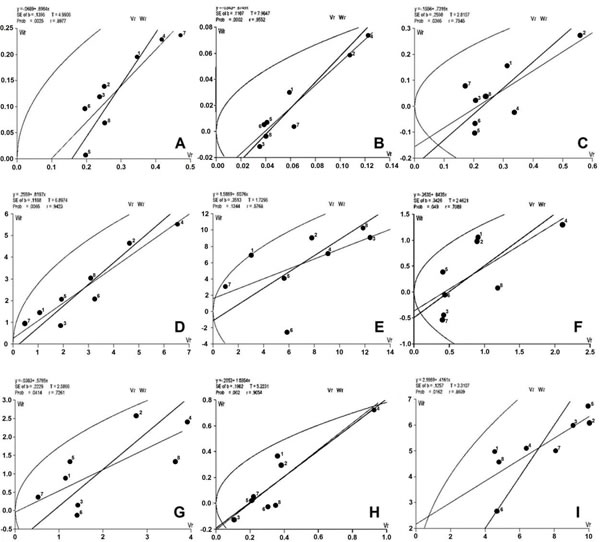Tropical Plant Research
An International Journal by Society for Tropical Plant Research
2014, VOLUME 1 ISSUE 2Pages: 60-64
Diallel analysis for different horticultural traits in bitter gourd (Momordica charantia L.) using Hayman’s numerical and graphical approach
K. Radha Rani
Abstract:
Twenty eight F1 hybrids developed during summer, 2010 by crossing 8 diverse parents in all possible combinations without reciprocals were evaluated for diallel analysis for genetic parameters and graphic representation for yield and yield attributing traits during summer 2011 at College of Horticulture, Rajendranagar, Hyderabad, India. The validity of the assumptions of diallel analysis was confirmed for all the traits studied except number of fruits/vine other traits such as average fruit weight, pulp thickness and yield/vine as t2 values for these traits were found to be significant. The dominance variance was found to be greater in magnitude than additive variance for all the traits indicating the presence of over dominance controlling the traits which was further confirmed from the regression line of Wr-Vr graph was found to cut the ordinate below origin. The distribution of array points along and around the regression line for yield/vine indicated that the parents IC-470560, IC-470550 and IC-033227 had an excess of dominant genes whereas IC-045339 being farthest from the origin carrying maximum recessive genes. The predominance of dominant gene action coupled with low heritability observed for all the traits except average fruit weight suggesting the importance of heterosis breeding for improvement of yield and yield attributing traits in bitter gourd.
Twenty eight F1 hybrids developed during summer, 2010 by crossing 8 diverse parents in all possible combinations without reciprocals were evaluated for diallel analysis for genetic parameters and graphic representation for yield and yield attributing traits during summer 2011 at College of Horticulture, Rajendranagar, Hyderabad, India. The validity of the assumptions of diallel analysis was confirmed for all the traits studied except number of fruits/vine other traits such as average fruit weight, pulp thickness and yield/vine as t2 values for these traits were found to be significant. The dominance variance was found to be greater in magnitude than additive variance for all the traits indicating the presence of over dominance controlling the traits which was further confirmed from the regression line of Wr-Vr graph was found to cut the ordinate below origin. The distribution of array points along and around the regression line for yield/vine indicated that the parents IC-470560, IC-470550 and IC-033227 had an excess of dominant genes whereas IC-045339 being farthest from the origin carrying maximum recessive genes. The predominance of dominant gene action coupled with low heritability observed for all the traits except average fruit weight suggesting the importance of heterosis breeding for improvement of yield and yield attributing traits in bitter gourd.

Fig.: A, Vine length; B, Number of laterals/vine; C, Internode length; D, Days to 1st male flower; E, Days to 1st female flower; F, Node number at 1st male flower; G, Node number at 1st female flower; H, Sex ratio; I, Number of fruits/vine
| 0 | 1 | 2 | 5 | 4 | 4 | 3 | 2 |


